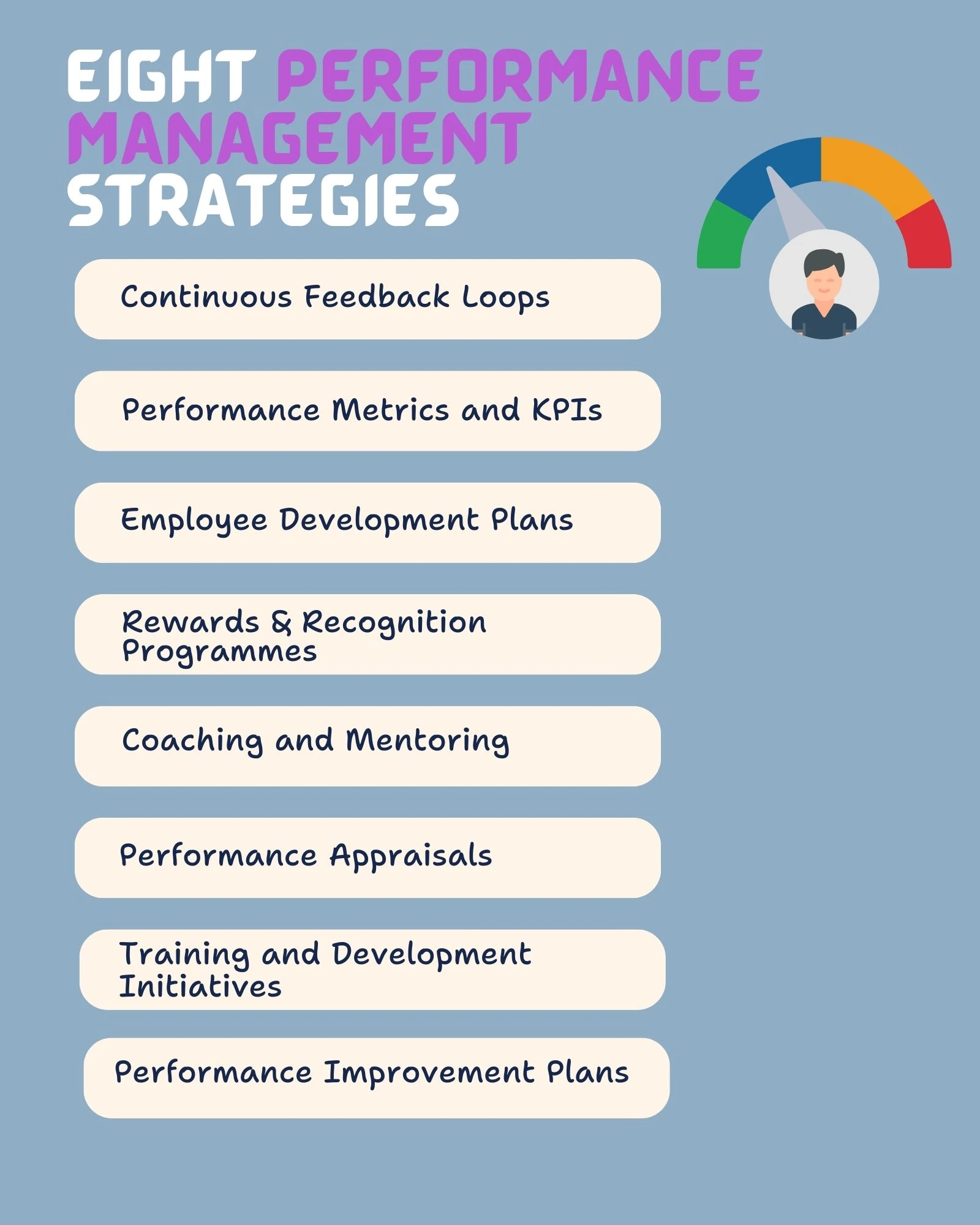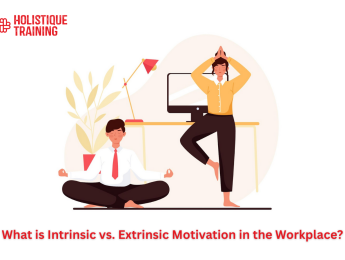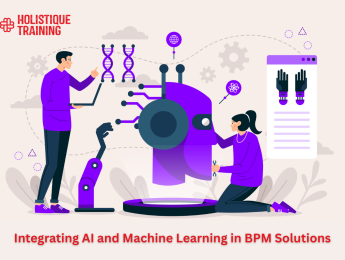- Table of Contents
- Introduction
- What Is Performance Management?
- 9 Performance Management Theories
- 1. Maslow’s Hierarchy of Needs
- 2. Herzberg’s Motivation-Hygiene Theory
- 3. Goal-setting Theory
- 4. Transformational Leadership Theory
- 5. Scenario-based Performance Management
- 6. 360-degree Feedback
- 7. Situational Leadership
- 8. Expectancy Theory
- 9. Learning Curve Theory
- The Benefits of Implementing a Performance Management Theory
- Enhanced Employee Engagement
- Improved Motivation
- Clarity of Expectations
- Holistic Feedback
- Adaptive Leadership
- Effective Reward Systems
- Continuous Improvement
- Retaining Top Talent
- How to Know Which Theory Works Best for Your Organisation
- 1. Assess Your Organisational Culture
- 2. Identify Your Organisational Goals
- 3. Analyse Your Workforce
- 4. Seek Employee Input
- 5. Consider a Hybrid Approach
- Eight Performance Management Strategies
- Continuous Feedback Loops
- Performance Metrics and KPIs
- Employee Development Plans
- Rewards and Recognition Programmes
- Coaching and Mentoring
- Performance Appraisals
- Training and Development Initiatives
- Performance Improvement Plans
- The Role of Technology in Performance Management
- Performance Management Software
- Data Analytics
- Artificial Intelligence (AI) and Machine Learning
- The Impact of Remote Work on Performance Management
- Virtual Communication
- Outcome-based Assessment
- Employee Well-being
- The Future of Performance Management
- Continuous Feedback Culture
- Data-driven Decision Making
- Personalised Learning and Development
- Conclusion
Introduction
Performance management is the heart and soul of any organisation's success. The compass guides individuals and teams toward achieving their goals and contributing to the overall mission. However, achieving optimal performance isn't a one-size-fits-all endeavour. It's a complex interplay of various factors and theories that come into play. In this comprehensive exploration, we delve into the world of performance management theories, their benefits, and how to select the right one for your organisation. We'll also share eight performance management strategies that can transform your workplace.
What Is Performance Management?
Before we dive into the theories and strategies, let's establish a foundational understanding of performance management. Performance management is a systematic process that helps organisations align their employees' behaviours, goals, and contributions with the company's objectives. It involves setting clear expectations, providing regular feedback, assessing performance, and fostering growth and development.
Performance management isn't just an annual ritual; it's an ongoing commitment to enhance individual and collective performance. It's about creating a culture of accountability, continuous improvement, and employee engagement.
Now that we've set the stage, let's explore nine influential performance management theories that have shaped the way organisations approach performance management.
9 Performance Management Theories
Performance management is a complex field that uses various theories to optimise employee performance. Each theory offers unique insights and strategies for enhancing productivity and motivation within an organisation. Let's delve deeper into each theory:
1. Maslow’s Hierarchy of Needs
Abraham Maslow's Hierarchy of Needs is a foundational theory in the world of motivation. It posits that individuals have a hierarchy of needs, with basic physiological needs (such as food and shelter) at the base, and higher-level needs (like self-actualisation and self-esteem) at the top. Understanding this theory can help organisations tailor their motivation strategies in a performance management context. For example:
- Physiological Needs: Ensure employees have a safe and comfortable working environment, proper nutrition, and fair compensation.
- Safety Needs: Provide job security, clear workplace policies, and health benefits to address employees' safety concerns.
- Social Needs: Foster a sense of belonging and camaraderie among teams to fulfil employees' social needs.
- Esteem Needs: Recognise and reward achievements, offer opportunities for advancement, and encourage employees to take on more responsibility.
- Self-Actualisation Needs: Support employees in pursuing personal growth, skill development, and self-fulfilment through their work.
Maslow's Hierarchy Level | Application in the Workplace |
Physiological Needs | Ensure basic needs for well-being are met. |
Safety Needs | Provide job security and safe working conditions. |
Social Needs | Foster a sense of belonging and collaboration. |
Esteem Needs | Recognise achievements and offer advancement. |
Self-Actualisation Needs | Support personal growth and skill development. |
Table 1: Maslow’s hierarchy of needs & performance management
Organisations can cultivate a more engaged and satisfied workforce by aligning motivational strategies with employees' specific needs on the hierarchy.
2. Herzberg’s Motivation-Hygiene Theory
Frederick Herzberg's Motivation-Hygiene Theory focuses on factors that can motivate employees and factors that can prevent dissatisfaction. Motivators, such as recognition and achievement, are positive factors that drive job satisfaction and motivation. Hygiene factors, including job security and working conditions, are essential to prevent dissatisfaction but don't necessarily boost motivation.
In practice, organisations can:
- Maximise Motivators:Encourage employees to set challenging goals, recognise their accomplishments, and provide opportunities for personal growth and development.
- Address Hygiene Factors: Ensure fair compensation, job security, and comfortable working conditions to create a baseline of job satisfaction.
A balanced approach to addressing both motivators and hygiene factors contributes to a motivated and content workforce.
3. Goal-setting Theory
Edwin Locke's Goal-setting Theory emphasises the importance of setting clear, specific, and challenging goals. Employees with well-defined objectives tend to be more motivated and focused. To apply this theory effectively:
- Set Clear Goals: Collaboratively establish specific, measurable, achievable, relevant, and time-bound (SMART) goals with employees.
- Regularly Monitor Progress: Provide feedback and track progress towards these goals to ensure employees stay on course.
Goal-setting theory helps employees understand their role in achieving organisational objectives and empowers them to take ownership of their performance.
4. Transformational Leadership Theory
Transformational Leadership theory, coined by James MacGregor Burns, highlights the impact of leaders who inspire and motivate their teams through a shared vision and personal growth opportunities. To implement this theory:
- Foster a Shared Vision: Leaders should articulate a compelling vision that resonates with employees and aligns with organisational goals.
- Empower and Support Employees: Encourage innovation, provide opportunities for skill development, and recognise and reward exceptional performance.
By embodying transformational leadership principles, managers can inspire their teams to reach new heights and become highly motivated contributors.
5. Scenario-based Performance Management
Scenario-based performance management takes a proactive approach by simulating future scenarios and assessing how employees would perform in them. This theory helps identify gaps in skills and competencies, enabling targeted development efforts. Practical steps include:
- Scenario Planning:Identify potential future challenges or opportunities in your industry or organisation.
- Assessment and Gap Analysis: Evaluate how well employees are prepared to handle these scenarios and identify areas where additional training or skill development is necessary.
Scenario-based performance management ensures that employees can navigate future challenges effectively, contributing to the organisation's long-term success.
6. 360-degree Feedback
Incorporating feedback from multiple sources, including peers, subordinates, and supervisors, 360-degree feedback provides a holistic view of an employee's performance. This approach promotes self-awareness and allows for more comprehensive performance assessments. Key steps include:
- Anonymous Feedback: Encourage honest and constructive feedback from various sources.
- Regular Feedback Cycles: Implement regular feedback sessions to discuss strengths and areas for improvement.
360-degree feedback helps employees gain a well-rounded perspective on their performance and promotes a culture of openness and continuous improvement.
7. Situational Leadership
Developed by Paul Hersey and Kenneth Blanchard, the Situational Leadership theory posits that effective leadership styles depend on the readiness level of employees. Managers must adapt their leadership style to match the situation, whether it's coaching, supporting, directing, or delegating. To apply this theory:
- Assess Readiness:Evaluate each employee's competence and commitment level for a given task.
- Adapt Leadership Style: Choose an appropriate leadership approach based on the employee's readiness.
Situational leadership ensures that leaders provide the right level of support and guidance, enhancing overall team performance.
8. Expectancy Theory
Victor Vroom's Expectancy Theory suggests that individuals are motivated to put in effort when they believe their efforts will lead to performance improvements and that improved performance will be rewarded. To leverage this theory:
- Clarify Expectations: Ensure employees understand the connection between their efforts, performance, and rewards.
- Link Rewards to Performance: Implement reward systems that tie incentives directly to individual and team performance.
Expectancy theory motivates employees by making the connection between their actions and the resulting rewards explicit and transparent.
9. Learning Curve Theory
The Learning Curve Theory highlights the relationship between experience and performance. It suggests that as individuals gain experience, their performance improves. To support this theory:
- Encourage Continuous Learning: Create a culture that values ongoing education and skill development.
- Provide Opportunities for Mastery: Offer training, mentorship, and challenging projects to accelerate the learning curve.
By embracing the learning curve theory, organisations can harness the potential of their employees' growing expertise to drive performance improvements.
These nine performance management theories offer valuable frameworks and strategies for enhancing performance management practices. By understanding and applying these theories in a tailored manner, organisations can foster a culture of continuous improvement, motivation, and success.
The Benefits of Implementing a Performance Management Theory
Implementing a performance management theory tailored to your organisation can yield many benefits. Here are some of the advantages you can expect to experience:
Enhanced Employee Engagement
Enhanced employee engagement leads to higher levels of job satisfaction, resulting in improved morale and a positive workplace atmosphere. As theories like Maslow's Hierarchy and Expectancy Theory demonstrate, employees are more likely to be engaged when they feel their contributions are valued and aligned with the organisation's goals. Engaged employees are also more likely to collaborate effectively with their peers, leading to increased innovation and productivity.
Improved Motivation
Motivated employees are more productive and more resilient in the face of challenges. A performance management strategy incorporating motivation theories, such as Maslow's Hierarchy and Expectancy Theory, ensures that employees' intrinsic and extrinsic motivations are addressed. This, in turn, leads to a workforce that consistently strives for excellence and is less likely to experience burnout.
Clarity of Expectations
Clarity in expectations is vital for both employees and managers. When employees understand precisely what is expected of them, they can direct their efforts toward achieving those expectations. Clear expectations also reduce team misunderstandings and conflicts, fostering a more harmonious work environment. Additionally, they enable managers to provide more accurate feedback during performance assessments. The goal-setting theory helps ensure that expectations are communicated clearly.
Holistic Feedback
360-degree feedback gives employees a comprehensive view of their performance and encourages self-awareness. It enables employees to recognise their strengths and areas for improvement from multiple perspectives. Additionally, this holistic approach to feedback fosters a culture of transparency and open communication within the organisation, leading to better problem-solving and collaboration.
Adaptive Leadership
The Situational Leadership theory emphasises the importance of adaptability in leadership styles. When managers can adapt their approach to match employees' readiness levels, it creates a more supportive and effective leadership dynamic. Employees feel their leaders understand their unique needs and are better equipped to guide them to success, resulting in improved employee-manager relationships.
Effective Reward Systems
Aligning rewards with performance, as the Expectancy Theory suggests, motivates employees and ensures that the organisation's resources are allocated efficiently. Employees perceive that their hard work and contributions are recognised and valued, which increases job satisfaction and loyalty. Effective reward systems can also attract and retain top talent, reducing turnover costs.
Continuous Improvement
Scenario-based performance management and the Learning Curve Theory are essential for fostering a culture of continuous improvement. By regularly assessing potential future scenarios and encouraging employees to learn from experience, organisations can adapt to changing market conditions and stay ahead of the competition. Continuous improvement is the hallmark of successful organisations in the long run.
Retaining Top Talent
In today's competitive job market, retaining top talent is a significant challenge. However, employees are likelier to remain loyal when they see a clear path for growth and development within an organisation. By implementing performance management strategies that support career progression and skill development, organisations can reduce turnover rates and the associated costs of recruiting and training new employees.
In summary, implementing a performance management theory tailored to your organisation can have many advantages. These benefits extend beyond improved performance metrics to encompass a positive workplace culture, increased employee satisfaction, and a competitive edge in the market. By understanding these advantages in detail, organisations can make more informed decisions when crafting their performance management strategies.
How to Know Which Theory Works Best for Your Organisation
Selecting the right performance management theory for your organisation requires careful consideration. Here's a step-by-step approach to help you make an informed decision:
1. Assess Your Organisational Culture
Take a deep dive into your organisational culture by considering how decisions are made, how communication flows, and the prevailing leadership style. If your culture leans towards collaboration and innovation, theories like Transformational Leadership or Scenario-based Performance Management may align well. Conversely, theories like situational leadership or goal-setting theory might be more suitable if they are more hierarchical and structured.
2. Identify Your Organisational Goals
Beyond just defining goals, it's essential to prioritise them. Consider your short-term and long-term objectives. For instance, if your primary goal is rapid growth and innovation, you may lean towards Transformational Leadership to inspire creativity. However, if your goal is stabilising and optimising existing operations, Expectancy Theory might be more fitting to ensure performance aligns with rewards.
3. Analyse Your Workforce
Dig deeper into the demographics and preferences of your workforce. Are they primarily a young, tech-savvy group seeking personal growth (fitting for Maslow's Hierarchy or Expectancy Theory), or do you have diverse experience levels where Situational Leadership might be valuable to adapt leadership styles accordingly? Understanding your employees' motivations and aspirations is key.
4. Seek Employee Input
Involve employees in decision-making by conducting surveys, focus groups, or one-on-one discussions. Their insights can provide valuable perspective on which theory aligns with their expectations and preferences. When employees feel heard and respected, they are more likely to embrace and actively participate in the chosen performance management approach.
5. Consider a Hybrid Approach
Sometimes, the most effective performance management strategy combines elements from multiple theories. A hybrid approach allows organisations to tailor their strategy to their unique needs. For instance, you might combine Goal-setting Theory with 360-degree feedback to create a feedback-rich environment that's also goal-oriented. This flexibility enables organisations to draw from the strengths of various theories to craft a customised approach.
In essence, selecting the right performance management theory is not a one-size-fits-all decision. It requires a nuanced understanding of your organisation's culture, goals, workforce, and employee preferences. By conducting a thorough analysis and involving key stakeholders, you can make an informed choice that aligns with your organisation's unique needs and aspirations, ultimately driving improved performance and success.
Eight Performance Management Strategies
With a solid understanding of performance management theories and how to choose the right one, let's explore eight performance management strategies that can transform your organisation:

Continuous Feedback Loops
Continuous feedback loops should encompass both formal and informal channels. Beyond scheduled performance reviews, encourage ongoing, spontaneous feedback among employees and managers. Utilise digital platforms or tools to facilitate quick and accessible feedback exchanges. Additionally, it's crucial to establish a culture where feedback is constructive and delivered with the intent of improvement, fostering an environment of continuous learning.
Performance Metrics and KPIs
Developing effective performance metrics requires balancing quantitative and qualitative measures. Ensure that key performance indicators (KPIs) are not just focused on output but also consider the quality and impact of work. Regularly communicate these metrics to employees and provide them with the necessary resources and support to achieve their goals. Furthermore, analyse historical performance data to identify trends and make data-driven adjustments.
Employee Development Plans
Tailored employee development plans should involve setting clear career paths and personal growth trajectories. Beyond addressing skill gaps, consider employees' long-term aspirations and align training and development initiatives with their career goals. Regularly revisit and update these plans based on evolving needs and performance assessments. Encourage employees to take ownership of their development and provide access to resources like online courses, mentorship programmes, or workshops.
Rewards and Recognition Programmes
Effective rewards and recognition programmes extend beyond monetary incentives. Non-monetary recognition, such as public praise or opportunities for advancement, can be equally motivating. Establish transparent criteria for recognition, ensuring that it's tied to specific achievements and aligned with organisational values. Regularly celebrate accomplishments, and involve peers in recognising each other's contributions to foster a culture of appreciation.
Coaching and Mentoring
Successful coaching and mentoring relationships thrive on mutual trust and open communication. Encourage managers to act as coaches who guide employees in their career journeys. Facilitate mentorship programmes that pair experienced employees with those seeking guidance. Additionally, reverse mentoring should be considered, where junior employees share their unique perspectives and skills with senior colleagues. This exchange of knowledge can lead to cross-generational skill development.
Performance Appraisals
Performance appraisals should be more than just a formality. Ensure that these assessments are comprehensive, focusing on past performance and future development goals. Create a structured framework for performance appraisals, including self-assessment, peer evaluations, and manager assessments. Use these appraisals as a platform for candid conversations about career progression and individual growth.
Training and Development Initiatives
Training and development initiatives should be customised to suit different learning styles and preferences. Offer a mix of traditional classroom training, e-learning modules, on-the-job training, and mentorship opportunities. Regularly evaluate the effectiveness of these initiatives by seeking feedback from participants and measuring their impact on performance. Furthermore, align training programmes with organisational goals and evolving industry trends to remain competitive.
Performance Improvement Plans
Performance improvement plans (PIPs) should be designed as constructive tools rather than punitive measures. When an employee's performance falls below expectations, provide them with a clear and structured PIP that outlines specific areas for improvement and a timeline for achieving them. Offer additional support, training, or coaching during this period to help employees succeed. Regularly review progress and adjust the plan as needed to ensure continuous improvement.
The Role of Technology in Performance Management
Technology has become a pivotal player in the ever-evolving landscape of performance management. Modern organisations are harnessing the power of digital tools and platforms to streamline and enhance their performance management processes.
Performance Management Software
Developing performance management software is one of this realm's most significant technological advancements. These tools, such as 15Five and Culture Amp, offer features like goal tracking, feedback management, and performance analytics. They provide a centralised platform where managers and employees can collaborate on setting and monitoring goals, sharing feedback, and conducting performance reviews. Performance management software improves efficiency and enables organisations to gather data-driven insights into employee performance trends.
Data Analytics
With the abundance of data generated by performance management software, organisations can now utilise data analytics to gain deeper insights into their workforce's performance. Advanced analytics can identify patterns, highlight areas for improvement, and even predict future performance trends. For instance, by analysing historical performance data, an organisation can identify which specific goals or strategies have yielded the best results and replicate them in the future.
Artificial Intelligence (AI) and Machine Learning
AI and machine learning revolutionise performance management by automating tasks and providing personalised recommendations. AI-powered chatbots can offer instant feedback to employees, while machine learning algorithms can identify patterns in employee behaviour and suggest tailored development plans. This saves time and ensures that performance management becomes a more dynamic and adaptive process.
The integration of technology into performance management is an exciting development that streamlines processes and enhances the overall employee experience.
The Impact of Remote Work on Performance Management
The global shift towards remote work has brought about new challenges and opportunities in the realm of performance management. With teams spread across various locations and time zones, organisations have had to adapt their performance management strategies to ensure continued success. Here's how remote work is influencing performance management:
Virtual Communication
With remote work, communication has become more reliant on digital platforms and video conferencing. Performance management now involves virtual one-on-one meetings, team discussions, and feedback sessions. Managers must adapt to communicate expectations and effectively provide support through these virtual channels.
Outcome-based Assessment
Remote work often emphasises outcomes rather than the number of hours worked. Performance management strategies are shifting towards outcome-based assessments, where employees are evaluated based on the results they deliver rather than their physical presence in the office. Clear goal setting and regular check-ins are crucial in this context.
Employee Well-being
Remote work has highlighted the importance of employee well-being in performance management. Organisations recognise that supporting employees' physical and mental health is essential for sustaining high performance. As a result, performance management strategies now include well-being initiatives, such as mental health resources and work-life balance support.
Remote Work Impact | Description of Performance Management |
Virtual Communication | Shift to digital meetings and feedback |
Outcome-based Assessment | Focus on results rather than hours worked |
Employee Well-being | Emphasise mental health and work-life balance |
Table 2: Key considerations in remote work
The Future of Performance Management
The world of performance management is continually evolving, and looking ahead, several trends are likely to shape its future. Here are some exciting developments to watch out for:
Continuous Feedback Culture
A culture of continuous feedback is gradually replacing the traditional annual performance review. Organisations are moving towards more frequent, informal feedback exchanges between managers and employees. Real-time feedback not only improves performance but also fosters stronger employee-manager relationships.
Data-driven Decision Making
As organisations collect more data through performance management software and other tools, the use of data-driven decision-making is set to increase. Predictive analytics will help organisations anticipate performance trends, allowing for proactive adjustments and improvements.
Personalised Learning and Development
The future of performance management will see a significant focus on personalised learning and development plans. AI-driven algorithms will analyse individual employee data to recommend tailored training and development opportunities. This personalised approach ensures that employees acquire the skills needed to excel in their roles.
In short, performance management is a dynamic field that continues to evolve in response to changes in technology, work environments, and employee expectations. Embracing these developments and staying adaptable will be key to creating a high-performance culture in the future.
Conclusion
Performance management is a multifaceted process that uses various theories and strategies to optimise employee performance. Understanding your organisation's unique needs, selecting the right theory, and implementing effective strategies can create a high-performance culture that drives success and growth. Remember, performance management is not a one-time endeavour; it's an ongoing commitment to excellence.
Finally, as the performance management landscape evolves, seizing the opportunity to refine your skills is paramount. Join our transformative course, 'Benchmarking Your Performance & Making Continuous Improvements,' and empower yourself with the knowledge and techniques to drive peak performance within your organisation, ensuring a prosperous future.

























